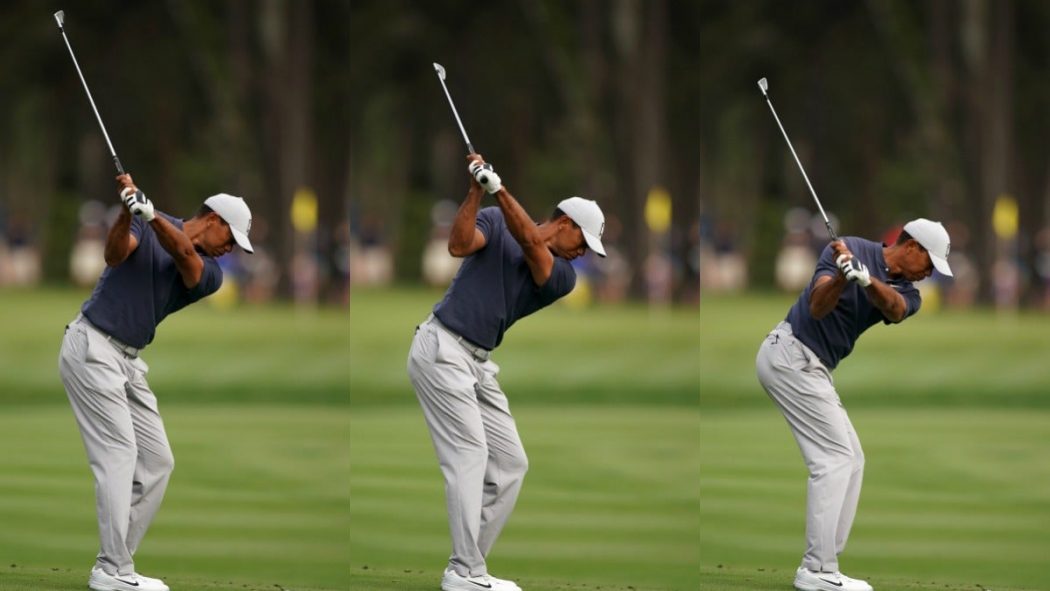The Golf Swing – Part 2
Golf Reimagined consultant Al Lovell enlightens us with his second article on how to develop a solid golf swing.
In the Beginning Golf article, we discussed holding the club the way you want, standing the way you want, and swinging in the best way you thought to make the club come back and hit the ball.
Then, in The Golf Swing Part 1 article, we discussed how to set up to the ball to help the club swing more effectively.
So now for the part that can make every golfer feel the most uncomfortable, The Grip. As a teacher, the easiest way I can mess up a lesson is to try and change your grip. This is why I didn’t discuss it when we were talking about how to set up and swing the club. Changing your hand position can make you very uncomfortable, and you won’t swing the club easily or naturally.
However…….if you want to make the most out of your game, you will need some basics of a good grip, so here goes……
When I’m talking grip, I’m talking for a right-handed golfer. Your left hand is the “top” hand, closest to the end of the grip, and your right hand is the “bottom” hand and goes on the grip below the left hand. For lefties, it should be the opposite. Fun fact, 30% of all golfers in Canada are left-handed, while only 12% of golfers in the USA are. Why the big difference???? I’ll tell you at the end of the article.
So now we’re back at the range, we’ve got the setup, stance, and ball position all set, what’s the most effective way to hold the club, and increase our chance of success?
There are three basic grips for golf, and once again, I urge you to pick the one that is most comfortable and works for you.
First, we will discuss the interlocking grip, used by Jack Nicklaus, Tiger Woods, as well as Rory McIlroy and Michelle Wie. As the name says, the index finger of your left hand and the pinkie finger of your right hand “interlock” to form one cohesive unit. This grip allows both hands to work as one unit, which once again improves your chances of making a good swing and hitting a good shot. I find this is a very good grip for amateur golfers and is the grip I myself use.
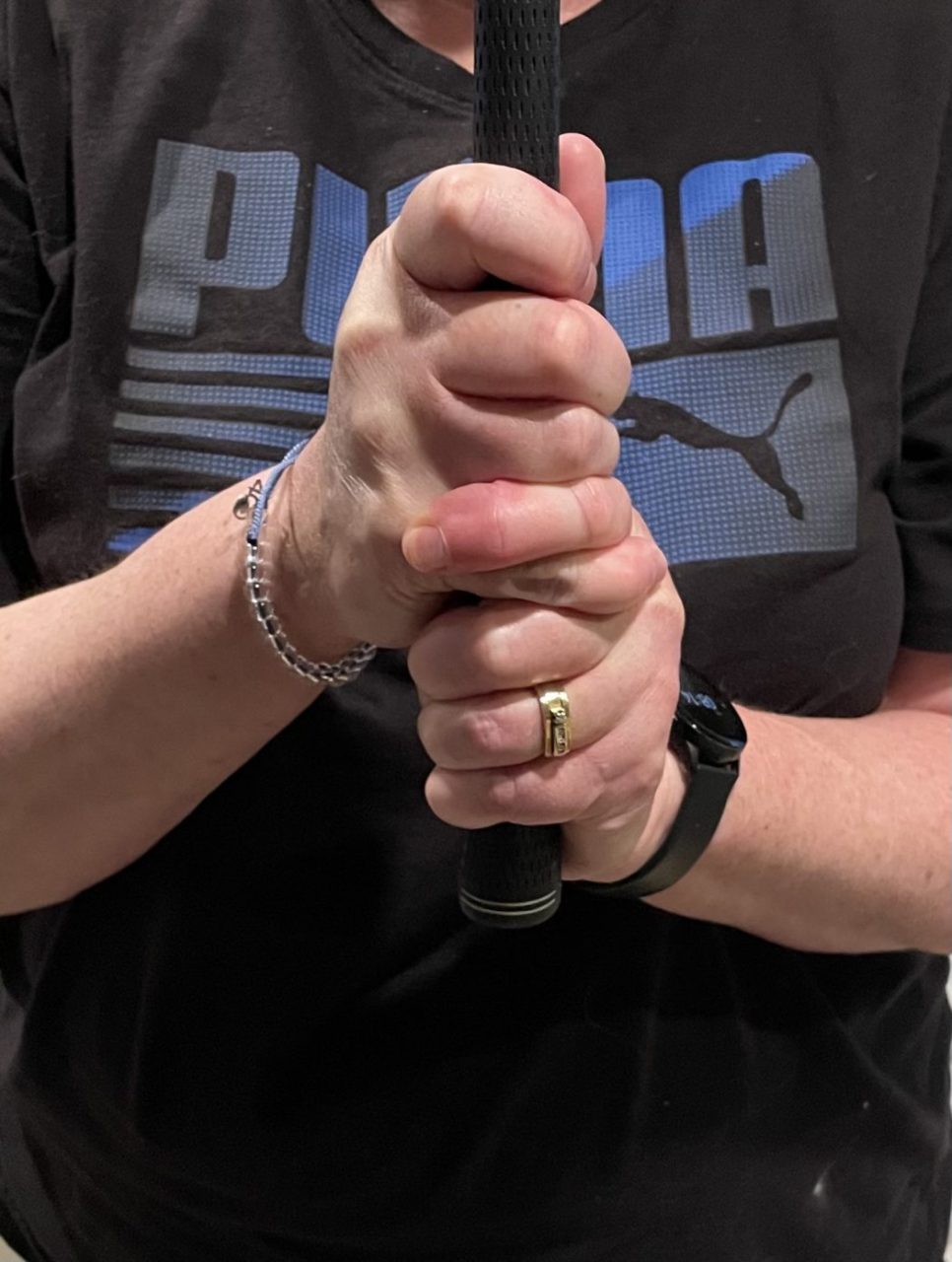
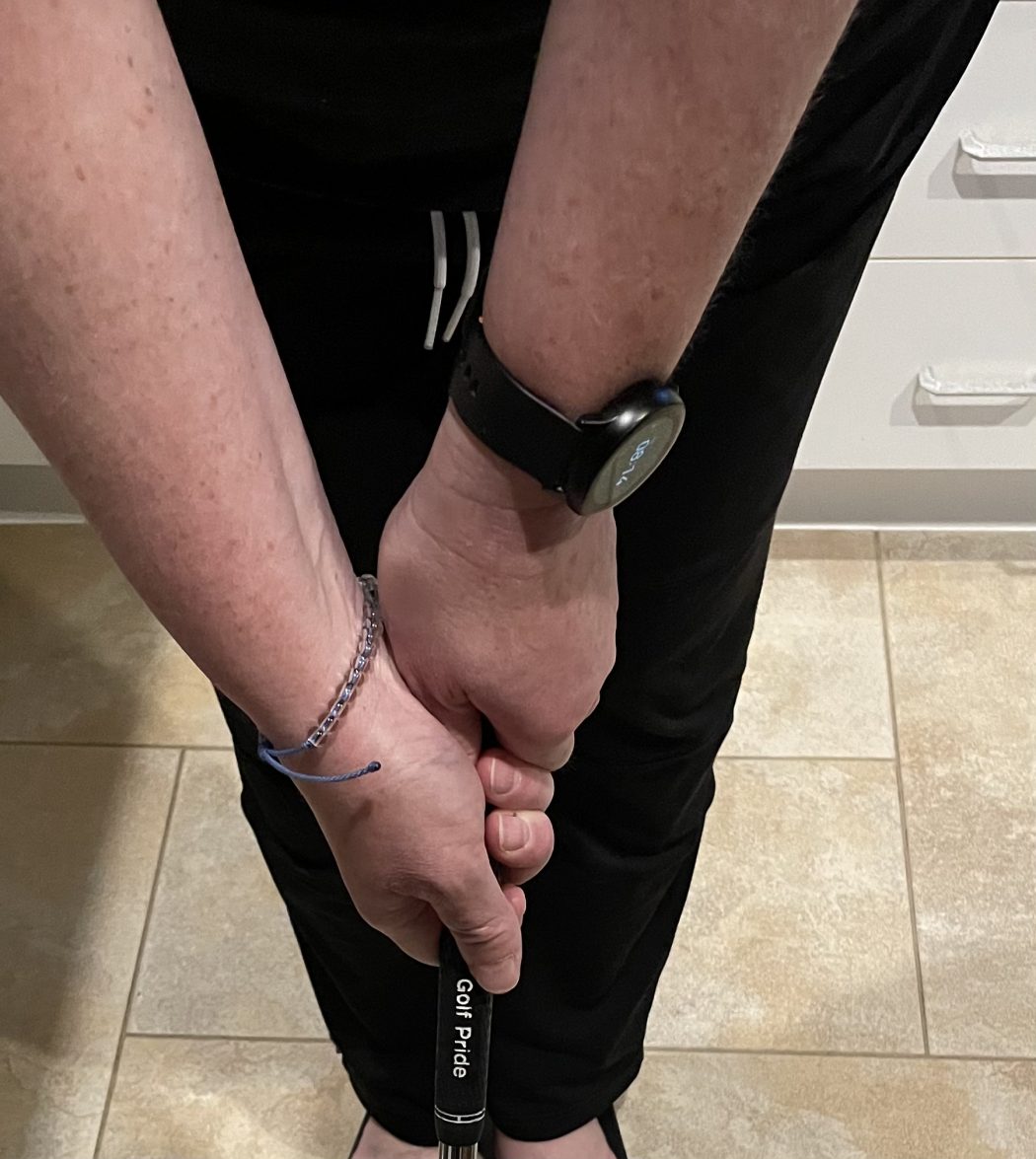
Next is the overlap grip, or Vardon grip. This grip is used by about 80% of all professional golfers, including Phil Mickelson. This involves overlapping the pinky finger of the right hand over the index finger of the left hand. Again this grip allows both hands to work together and improves your chances of hitting good shots. For beginner and intermediate golfers, this is a tougher grip to master, but it is what works for you, or you feel best with, that is most important.
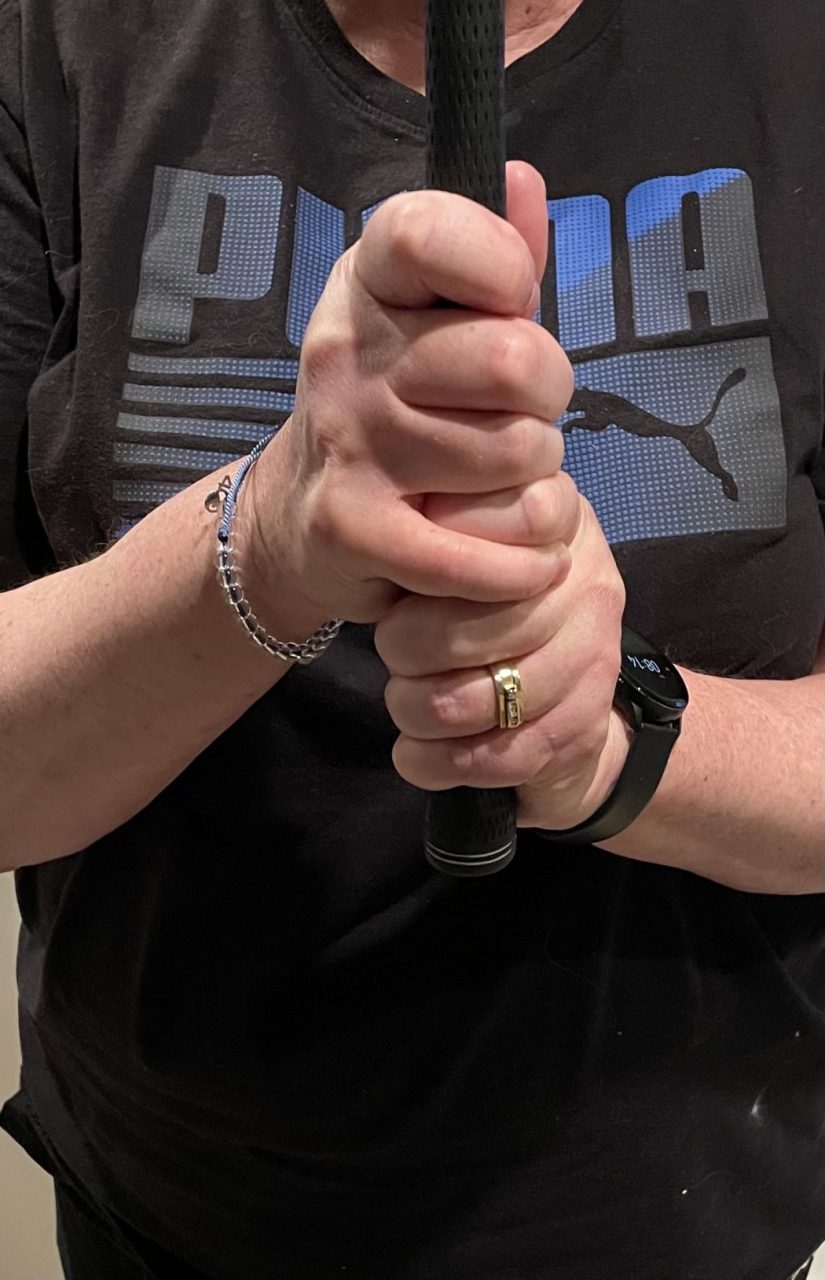
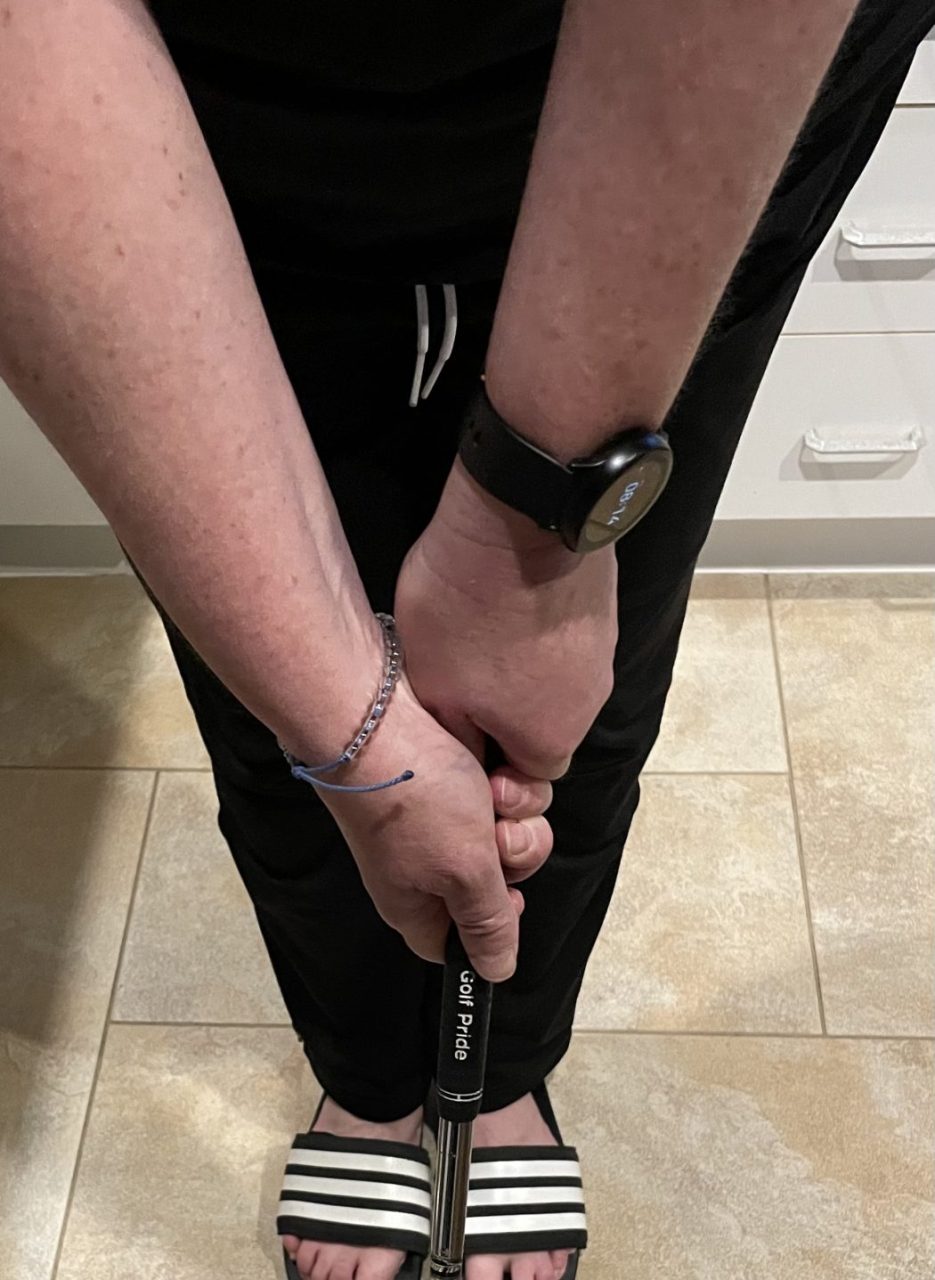
Finally, we have the ten-finger grip or baseball grip as it’s known. This involves having all 10 fingers on the club, with no overlap or interlock. This is a very easy grip to start out with and can help you get a comfortable feel for how to swing the club. One of the professionals I used to work with used this grip, and he was an excellent golfer.
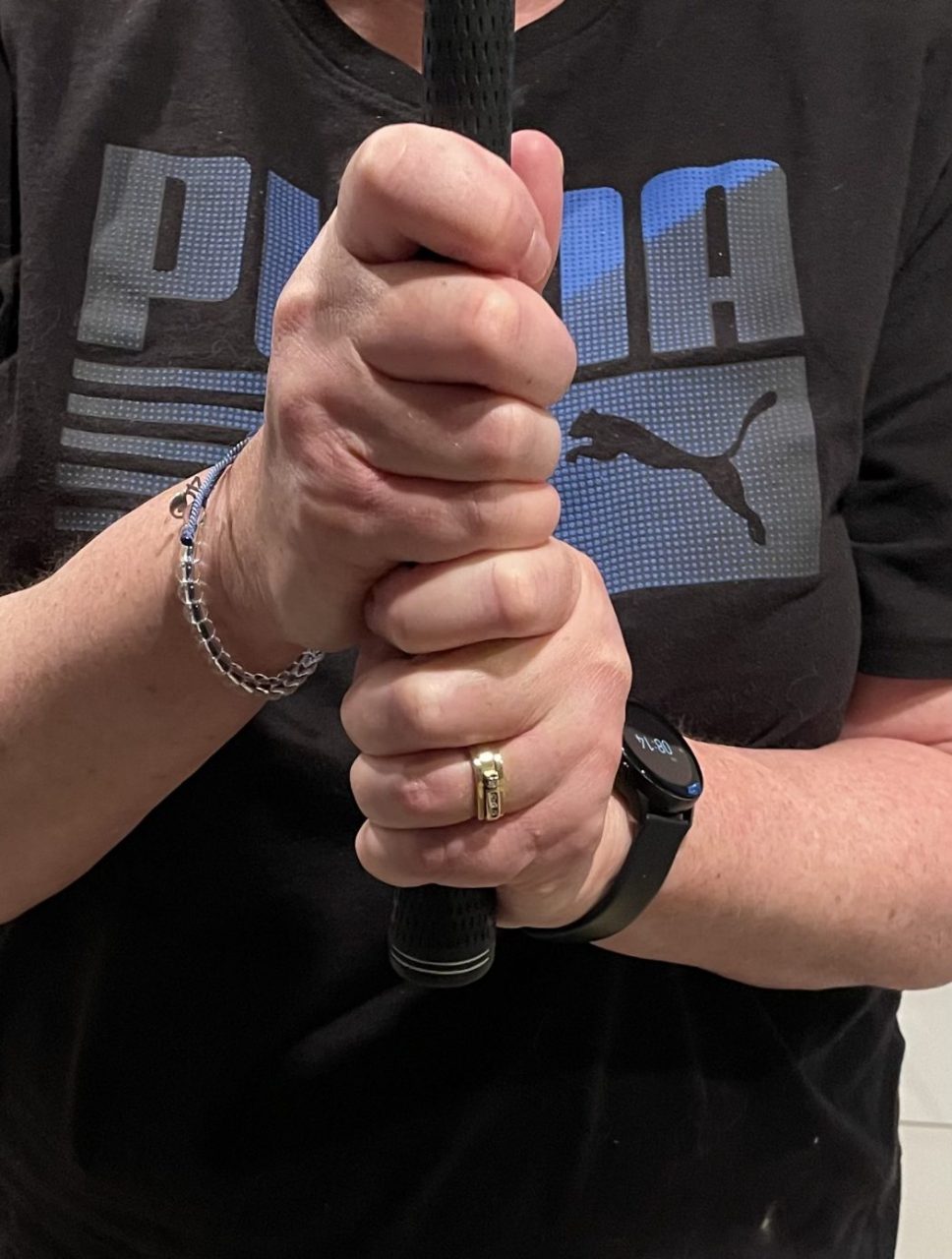

As you’ve seen in the pictures, on all of these grips (RH golfers shown), your left thumb (or top hand thumb) is covered by the palm of the right hand. You want to feel the club in your fingers as opposed to the palm of your hand, this will result in a stronger grip.
And finally, a tough question that I get asked all the time; “How hard should I hold the club?” First, if you’re holding it like you’re trying to strangle the last breath out of it, you’re hanging on too hard. I’ve heard people say you should imagine holding a tube of toothpaste and when you swing, no toothpaste should come out of the tube. Every time I tried this I wound up with toothpaste all over the bathroom.
The easiest way for me to explain grip pressure is something like this. Take a club, and lay it on the ground. Pick it up with one hand, then the other. The amount of pressure you used when you closed your hand around the grip of the club is a great place to start. You didn’t have to think about it, and you were comfortable doing it.
I hope these tips along with the photos of a proper grip help you enjoy the game even more.
Finally, why are 30% of all golfers in Canada left-handed, and why is that percentage higher than other countries? Hockey. Many right-handed people play hockey left-handed, so when it was time to take up golf they found it the easiest way to swing the club.

